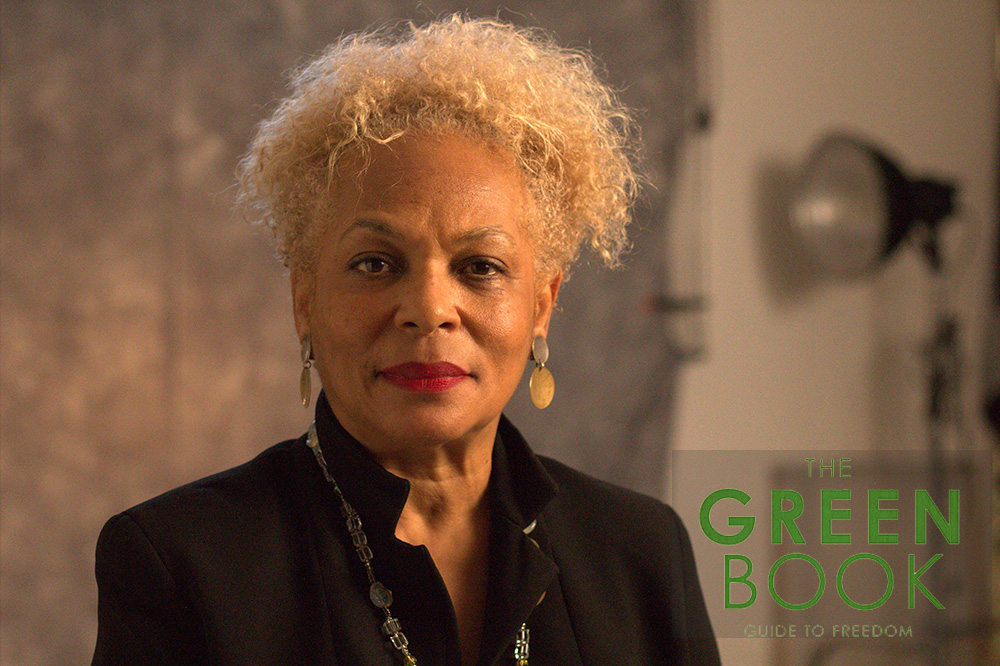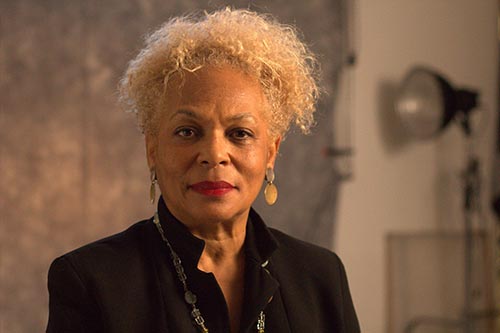Honoring a Legacy: The Green Book

Victor Green must have known, for it was his illustrated Green Book that gave African Americans who wanted to travel in pre-civil rights America a sense of power fused with freedom.
His book reflected two different realities—the creeping, quiet menace that faced African Americans traveling across the nation in the 1940s, 50s, and 60s as well as the resilience and determination of these people.
Smithsonian Channel has documented the book’s vast impact with the hour-long documentary The Green Book: Guide to Freedom. The documentary, like the book itself, showcases the pride, practicalities, determinations and fear that were a reality for African Americans traveling in pre-civil rights America. It also highlights the fortitude of a bonded community that would not be denied its right to travel the open road.

“From the beginning, we wanted the film to illuminate the significant challenges of African American travel in our country’s history, as well as the victories achieved by the African American community in the face of adversity,” said Linda Goldman, executive producer for Smithsonian Channel’s Mission Critical programming. “The dangers and horrors of racism were very real. And so were the resilience and ingenuity of African American businesses and communities that the Green Book served.”
As the documentary opens, it feels easy to relate to the young girl who grins with excitement in the car, ready to see something new on the road. You then see her father, outside talking to a white man, carefully determining if it was safe for his family to get out.

Honoring the Female Voice through the Green Book
By Susan Ashworth
Broadcasting & Cable Newsletter
The smarter way to stay on top of broadcasting and cable industry. Sign up below
Many of the successful businesses that were published in the Green Book have something key in common. They were owned and managed by women: cafes, catering businesses, beauty parlors, restaurants, hotels and more.
“At Smithsonian Channel, we always seek to expand representation in our films. In this case, we were excited to discover how many Green Book businesses were owned by women,” said Linda Goldman, executive producer for Smithsonian Channel’s Mission Critical programming.
One feeling that resonates clearly after watching the new documentary The Green Book: A Guide to Freedom is the undercurrent of connectivity that exists in African American communities. And the documentary expresses that most clearly when it incorporates voices from women.
The multidimensional stories — often told from the perspective of women who lived through the area of the Green Book — are enriched by documentary filmmaker Yoruba Richen’s intimate directing style.
In honor of Women’s History Month, the documentary will be shown in 18 markets across the nation. “As one character says: ‘Successful businesses have been owned by women forever. But you can forget that if you don’t have evidence. The Green Book gives you evidence,’” Goldman said.

Victor Green knew this reality well. A black postal carrier from Harlem, Green saw African Americans being turned away from certain businesses in his own neighborhood. The Green Book was first published in 1936, and at its height the pamphlet listed more than 9,500 locations — it had become more than a just a travel guide, it had become a roadmap to some of the most significant people, successful businesses and most important political milestones of the 20 century.
The documentary goes behind the scenes to investigate the secrets and stories behind many of the places listed in the Green Book. Take the Idlewild resort, known as the “Black Eden of Michigan,” that served as one of the first places African Americans could vacation and buy property without fear of being discriminated against. “We were free to bike, free to swim, free to just visit with each other, and have a wonderful time,” said Marilyn S. Taylor, a longtime resident of the community.
Yet today, only a third of those locations remain. “We need to find those places, and we need to see them, and we need to revere what they meant,” said Dr. Henrie Monteith Treadwell. “It’s important for everyone in this nation to examine the significance of the Green Book. Because it made all of the difference to our survival.”
The Green Book: Guide to Freedom
It’s clear that the Green Book’s legacy continues. The guide is being discovered by young entrepreneurs who are purchasing unused properties found in the Green Book guide and bringing them back to life. The New York City Council recently voted to designate the Harlem YMCA has a landmark due to its cultural significance to the African American community, while President Barack Obama named the A.G. Gaston Motel — which served as a vital meeting place for Martin Luther King Jr. during the civil rights era — as a National Historic Monument in 2017.
“Telling the story of this book … allows us to see a parallel country where people lived and thrived and created and grew opportunities of appreciation for themselves and their community,” said Marquette Folley, Project Director for the Smithsonian Institution Traveling Exhibition Service.
According to Goldman, the story of the Green Book is compelling because it is quintessentially American, encompassing both the tragic sin of racism and the promise of freedom and opportunity. “America is a place where the Green Book was necessary — and at the same time a place where a postal worker with a vision could build a travel empire, planting the seeds for thriving businesses and communities across the nation.”

Ours is not only a narrative of oppression but is also a narrative of joy and beauty that has always been part of our history even though it hasn't been told.” — Director Yoruba Richen

The stories told by the Green Book are as relevant today as they were 50 years ago. Smithsonian Channel’s The Green Book: Guide to Freedom will lead the network’s fifth annual Black History Month Screening tour in partnership with Comcast, Charter and Altice in 18 markets nationwide for a total of 19 screenings. Smithsonian Channel also expanded its partnership this year to include employee screenings at Google and Hulu in an effort to reach key market demographics.
“We believe the story told in The Green Book: Guide to Freedom is universal and essential to understanding our country’s history, encompassing stories that pay tribute to both horrors and triumphs,” Goldman said. “We’re so excited to partner with Google and Hulu for the first time on the tour this year, giving their tastemaking staffs an early look at a documentary that we are so proud of.”
Another power that clearly resonates after watching the film: the undercurrent of connectivity that exits in African American communities.
“One of the most beautiful discoveries about making this film was the community that the Green Book created,” said director Yoruba Richen. “Everyone talked about it during the interviews, and it was definitely something that we tried to show in the film both thematically and geographically.”
What really moved Richen is how, despite the danger that existed for African Americans, the community created their own spaces for leisure and pleasure. “And we always have,” she said. “Ours is not only a narrative of oppression but is also a narrative of joy and beauty that has always been part of our history even though it hasn't been told.”
Many moments in the film — both negative and positive — still feel relevant today, said Goldman. “Racism continues to manifest in different ways across the country. And so does resilience, ingenuity, and determination.”
“The Green Book: Guide to Freedom” premieres Monday Feb. 25 at 8 pm ET/PT on Smithsonian Channel and will be available for early sampling on distributors’ VOD and TVE platforms beginning Feb. 18.
Susan Ashworth is the former editor of TV Technology and a longtime contributor to Radio World. In addition to her work covering the broadcast television industry, she has served as editor-in-chief of two housing finance magazines and written about topics as varied as education, chess, music, sports and the connected home environment. She lives in the Bay Area to be close to the San Francisco 49ers and the fog.

